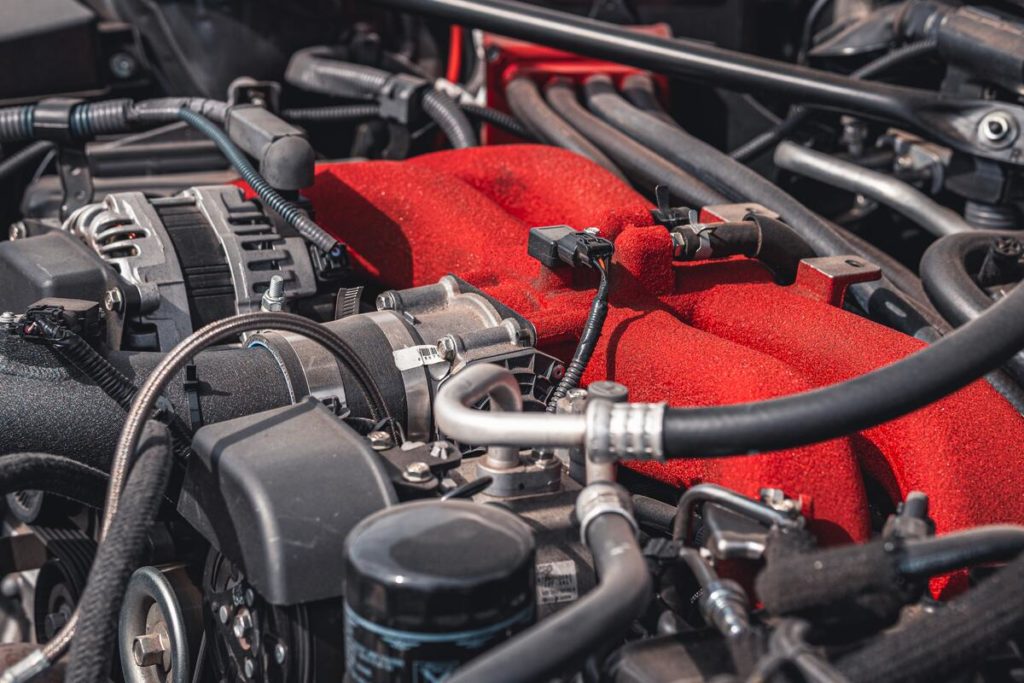Looking to learn more about the Subaru FA20 engine? While it's been used in a number of Subaru and Toyota vehicles, with many owners happily driving along for many years, it's not without its kinks that need to be worked out and issues of concern. After personally driving and modifying FA20 powered cars, and researching everything there is to know, we've compiled this guide.
FA20 Engine Specs & Information
The FA20 engine was introduced in 2012, and comes in both naturally aspirated and turbo variants. The engine was derived from the FB engine for the Subaru BRZ. Shortly after, in late 2012, Subaru began to sell Subaru Legacy GT models sold in Japan equipped with turbo engines, using the FA20F.
The engine was developed as along with Toyota, for use the in Toyota 86, which was branded as the Scion FR-S in the United States up until 2016 when the Scion brand was discontinued.
The engine features a shorter intake manifold and engine oil pan, to keep the overall engine height down, allowing for a lower center of gravity. This engine has some other changes from the FA20F, including a reduced compression ratio, and uses only direct injection with no port injection.
The FA20 engine is a 2 liter 4 cylinder motor using a boxer flat 4 layout with dual overhead camshafts. The heads feature variable valve timing (Subaru AVCS) on both the exhaust and intake camshafts.
Both turbo and naturally aspirated versions use a "square" piston and cylinders layout where bore and stroke are the same. These Subaru engines have different pistons and head to get the lower compression ratio in the boosted models, yet both share the same bore and stroke.
Subaru FA20D - Naturally Aspirated Engine

The FA20D is the naturally aspirated engine, also identified in Toyota vehicles as 4U-GSE. The NA version of the FA20 motor is not known for having high power or torque, but however is known as being quite reliable and economical. This engine is found in the following vehicles.
- Subaru BRZ (ZC chassis - 2012-2021)
- Toyota GT86 (ZN6 - 2012-2021)
- Scion FR-S (ZN6 - 2012-2021)
While these cars come naturally aspirated from the factory, a common modification is a turbo kit, which will drastically improve power, bringing them up to the power levels of the WRX and beyond.
Engine specs:
- Fuel injection: Direct fuel injection & port injection
- Horsepower: 197-205hp @ 7000rpm
- Torque: 151-156 @ 7000rpm
- Bore: 3.39"/86mm
- Stroke: 3.39"/86mm
- Compression Ratio: 12.5:1
- Engine Oil Type: 0W-20
- Engine Oil Capacity: 6.3 liters
Subaru FA20F - Turbo Engine

The FA20F is also known as the FA20DIT, equipped with a twin-scroll turbo. In the models equipped with this engine, it replaces the EJ25 series on previous model years. The low peak torque of the turbo variant makes it a very responsive and fun. It's very surprising just how much power the turbo brings to a small 2 liter with only 4 cylinders. Subaru also reduced the compression ratio when they installed the turbo. The following cars are equipped with FA20 turbo engines.
- Subaru WRX (VA chassis - 2014-2021)
- Subaru Legacy GT (BM - 2012-2014)
- Subaru Legacy GT (BN - 2014-2019)
- Subaru Levorg (VM - 2014-2020)
- Subaru Forester XT (SJ - 2014-2021)
Engine specs:
- Fuel injection: Direct fuel injection
- Horsepower: 250-296 HP @ 5600 RPM
- Torque: 258-295 lb-ft @ 2000 RPM
- Bore: 3.39"/86mm
- Stroke: 3.39"/86mm
- Compression Ratio: 10.6:1
- Engine Oil Type: 5W-30
- Engine Oil Capacity: 5.1 liters
Most Common Problems With The FA20 Engine
Carbon Build-up
The FA20F turbo engine, along with other engines using direct injection, commonly has an issue with carbon build-up on the valves. This can lead to power loss and misfires, as well as rough idling.
The generally accepted fix to this problem is to have a walnut blasting performed on the valves, removing the carbon deposits with gentle abrasive. This service can cost a couple of hundred dollars, and some owners report having noticeable build up in as little as 20K miles. Others report it causing no notable issues even with 100K miles or more.
Another way to help avoid Carbon buildup is to regularly clean the intake system with aerosol of Seafoam or something similar. Some think this is a waste of time but others swear by it keeping the buildup from happening. To do this you just loosen the boot before the turbo, install the little straw into the intake tube, have a friend keep the revs up and spray the cleaner into the intake without letting the engine die.
Some owners have opted to have the intake manifold from the FA20F variant of the engine, along with the port injectors, installed. The added fueling not only can support further modifications, but helps keep the valves clean. However, controlling the extra injectors requires an aftermarket ECU.
Issues With Factory Tune
Replacing the factory ECU firmware is one of the first common modifications most Subaru WRX owners make. The factory tuning leaves something to be desired, and a simple Stage 1 tune using the Cobb AccessPort clears up a couple of issues:
With the stock tune, there is a rev hang issue, causing the engine's RPMs to stay up after the throttle has been released. Owners can reduce or eliminate this issue with an aftermarket tune. This is likely built into the factory tune for emissions reasons.
There is a noticeable mid RPM torque dip that can be fixed with tuning. Tuning can increase overall performance across the entire range of RPMs, and smooth out this torque dip.
However, any engine modifications, including ECU tuning can be grounds for Subaru to deny warranty coverage in event of an engine failure.
Valve Springs
The FA engine had some problems with complaints of the valve springs breaking in the 2012-2013 engines, leading to engines stalling. Subaru did have a future recall in 2018 to replace the springs on 400,000 vehicles. This was specifically an issue with the naturally aspirated FA20D found in the Subaru BRZ, Scion FR-S, and Toyota GT86.
However, some owners experienced issues after having their valve springs replaced. Likely this was caused due to techs using too much sealant, which mixed with engine oil, clogging oil pathways and the oil pickup and leading to engine failure.
These failures have lead to a class action lawsuit against Subaru and Toyota, and they've stopped performing the valve spring replacement recalls. It's important to note that this recall started due to only eleven failures, so it's not a big cause for concern.
Connecting Rods
The connecting rods generally aren't an issue with these engines, but they can fail when modified. This is usually from a failure of rod bearings but can also be from bent connecting rods.
Generally, this becomes a concern when the engine is producing over 350 ft-lbs of torque, so experienced tuners know to keep the peak torque below this figure for longevity of the engine.
Overall Reliability of the FA20 Engine
Other than a few issues, which every engine has its own, the FA engine has proven to be a quality, fun, reliable engine from Subaru. Most people that purchase a Subaru with a FA20 engine end up falling in love with it, giving credit to Subarus's slogan "Love: it's what makes a Subaru a Subaru."
We are happy to recommend a FA20 equipped vehicle to anyone. They are a great engine developed and designed to run many years. For the most part they have proven to work for a long time, with years of low maintenance, and plenty of parts for aftermarket modification.

